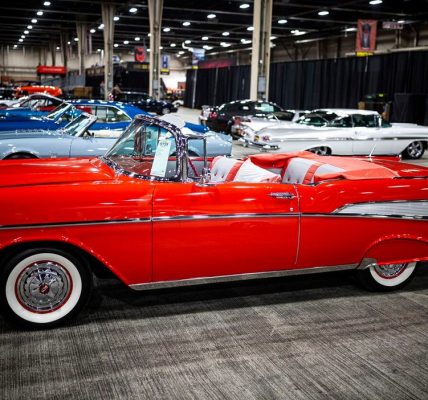If you’re a car enthusiast, you’ve probably heard the term “vintage cars” thrown around. These classic automobiles hold a special place in the hearts of collectors and enthusiasts alike. But have you ever wondered what qualifies a car as vintage? How old does a car have to be to earn this prestigious title? In this article, we will delve into the world of vintage cars, exploring the criteria that determine their age and why they are so cherished by many. So, fasten your seatbelts, and let’s take a ride through automotive history!
Defining Vintage Cars
To begin our journey, let’s first define what a vintage car is. A vintage car is typically an automobile that is at least 30 years old, with some variation in this definition depending on different regions and organizations. However, the 30-year mark is a commonly accepted benchmark. This means that if a car was manufactured in or before 1993, it would qualify as a vintage car in 2023.
Vintage vs. Antique: What’s the Difference?
Before we go any further, it’s essential to distinguish between vintage and antique cars. While both terms are often used interchangeably, they refer to different categories of vehicles. Vintage cars, as mentioned, are typically at least 30 years old. On the other hand, antique cars are usually over 45 years old. So, vintage cars are a subset of antique cars, and the age difference sets them apart.
The Allure of Vintage Cars

Now that we’ve established the age criterion, let’s explore why vintage cars hold such allure for automobile enthusiasts.
Nostalgia
One of the primary reasons people are drawn to vintage cars is nostalgia. These cars often remind individuals of a bygone era, evoking memories of their youth or a time they romanticize. Owning and driving a vintage car can transport someone back in time, providing a unique and sentimental experience.
Unique Design and Craftsmanship
Vintage cars boast exquisite design and craftsmanship that is often unmatched by modern vehicles. These classics were hand-built with meticulous attention to detail, resulting in timeless beauty. Their unique features, such as chrome accents, intricate grille designs, and distinct body styles, make them stand out on the road.
Investment Potential
For some, vintage cars are not just a hobby but also a lucrative investment. Many classic cars appreciate in value over time, making them an attractive option for investors. If you choose the right vintage car and maintain it well, it could potentially become a valuable asset.
Sense of Community
Owning a vintage car can be a ticket to an exclusive club. Enthusiasts often form communities or join clubs dedicated to vintage cars, where they share their passion, knowledge, and experiences. These communities offer a sense of belonging and camaraderie that adds to the appeal of vintage car ownership.
Preserving Vintage Cars

Preserving vintage cars is essential to maintain their historical significance and beauty. Owners of vintage cars often go to great lengths to ensure their vehicles remain in pristine condition.
Restoration Projects
Restoring a vintage car to its former glory is a labor of love for many collectors. They painstakingly source original parts, repair or replace worn components, and meticulously restore the car’s appearance and functionality. The result is a stunning piece of automotive history.
Maintenance and Care
Even if not involved in a full restoration project, vintage car owners are dedicated to regular maintenance and care. This includes routine oil changes, inspections, and keeping the car in a climate-controlled environment to prevent deterioration.
Conclusion
A car typically needs to be at least 30 years old to be considered vintage, although this criterion can vary. Vintage cars captivate enthusiasts with their nostalgia, unique design, investment potential, and sense of community. Preserving these classic automobiles through restoration projects and meticulous care is vital to ensure their continued existence for future generations to enjoy.
And now, let’s answer some frequently asked questions about vintage cars.
FAQs
- How can I determine if my car is vintage?
To determine if your car is vintage, check its manufacturing year. If it was built at least 30 years ago, it likely qualifies as vintage.
- Are vintage cars expensive to maintain?
The cost of maintaining a vintage car can vary widely depending on the make and model. Some require extensive maintenance, while others are relatively low-maintenance.
- Can vintage cars be driven regularly?
Yes, vintage cars can be driven regularly, but it’s essential to provide them with proper care and maintenance to ensure their longevity.
- Do vintage cars have modern safety features?
Most vintage cars lack modern safety features, so owners should exercise caution when driving them and consider retrofitting safety upgrades.
- How do I join a vintage car enthusiast club?
To join a vintage car enthusiast club, you can search online for local clubs in your area or attend vintage car shows and events to connect with like-minded individuals.





